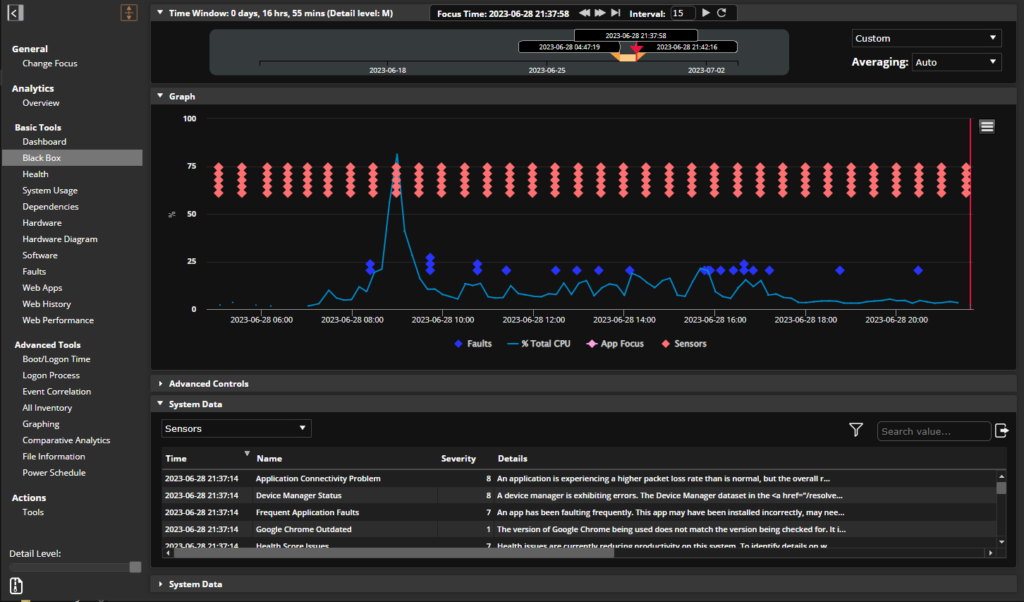3 Strategies for Demonstrating the Value of IT Investments to Business Leadership

How high-level data, establishing baselines and goals, and tracking progress can position IT as a strategic partner within organizations
IT pros are the best source of information for working out how to invest in workplace tools and technology. They understand that better tech translates to better business results — especially in today’s digital landscape where work is done pretty much anywhere on any number of devices.
Business leaders, though, can be hesitant to invest in new tech solutions without solid proof of their potential value. Without a technical background, it can be harder for executives to make the case that new tech initiatives lead to a more profitable bottom line. And to make matters more difficult, IT continues to be haunted by business paradigms of the past that view IT only as an isolated cost center rather than a strategic business asset.
So it falls to IT teams to demonstrate why specific IT investments are important, and to do so in a way that’s clear, insightful, and motivates business leaders to act. Here are a few ways to make that happen.
SOLUTION BRIEF
Executive Insights
Drive Informed Business Strategy Through the IT Estate
Start with the Bottom Line
Nothing beats good, irrefutable data when evaluating new business initiatives, investments, and goals. But with technical data, some streamlining might be needed to effectively communicate how uptime, network latency, and application faults fit into the overall business strategy.
Good data visualization and high-level, business-centric insights can help on this front. Leadership needs to be able to zero-in on bottom-line metrics that show the return on investments (ROI). It’s also beneficial to show the value of the IT estate in terms of productivity, whether it’s how much time or money the organization is saving.
With these kinds of executive-level insights, leaders can start connecting digital impacts to actual business outcomes. For example, data on the productivity impact to employees shows how much time they lose per week to technical issues, and that in turn can be connected to employee dissatisfaction, retention issues, and even revenue loss. So while business leadership might not know everything about network latency, they can still see how latency and other IT issues make it harder for employees to meet deadlines.
WEBINAR
IT as a Value Driver
How to Communicate the Value of Tech Initiatives to Executive Leaders
Establish Baselines and Ideal Goals
Having good high-level data and key performance indicators (KPIs) available to executive leadership, though, is just the first step. To actually drive change and shape impactful business decisions, IT must also help executives make sense of this data and demonstrate how the organization can act on these findings to make measurable progress.
What’s our organization’s current health score? Can we improve that score by X amount by the next quarter? What investments do we need to make to lower the productivity impact to employees by X hours throughout the year? Where do other companies in our industry or geography rank with these KPIs?
The answers can be found once again in the data.
Using a digital experience management (DEM) solution or similar tool, IT can prepare potential initiatives and strategies based on real-time and historical data of device performance, system faults, connectivity issues, resource usage, user behaviors, and more metrics from across the digital environment. Constant analysis of these datapoints — ideally using artificial intelligence capabilities — helps teams to isolate and understand why specific systems, hardware, applications, and workflows are impacting digital employee experience (DEX), as well as how these issues can be corrected or improved. Anonymized community data on similar organizations, too, can also provide valuable guidance for establishing baselines and creating goals.
With a more holistic view of the IT estate and the factors impacting important KPIs, IT is in a better position to make the case for transformation projects, new technology investments, or other innovative strategies that spur business growth and development.
Track and Measure Progress
A data-driven case is enough to get executive leadership’s attention, but real trust comes when IT is able to track and measure the progress of its initiatives. To fully establish itself as a strategic partner within the business, IT must be able to collect data on KPIs before and after initiatives are implemented.
Tracking and measuring results in this way is vital to demonstrating the impact of IT initiatives on overall business success, especially if IT can then tie those measurements to organization-wide outcomes. For example, when three hours a week are added to overall employee productivity, it’s important not only to demonstrate that but to also illustrate what it means for the business. What’s the ROI that comes with this increased productivity? Does it improve employee satisfaction and therefore aid in retention? Explaining these benefits will show IT’s value to the business and, in the process, increase the likelihood that additional IT projects get approved.
Reliable tracking and measuring also helps keep businesses agile by enabling IT and executives to understand how new workplace trends — such as hybrid work — impact the digital employee experience. As the technology landscape changes and new solutions are adopted, being able to track IT health and employee productivity can help business leaders measure the success of evolving approaches to work. This in turn can encourage business agility by giving IT and executives the information they need to make timely decisions appropriate for current technology needs.
As technology continues to evolve over time, there will always be a need to track and measure how new approaches impact the business’s bottom line. For that reason, the future of any organization depends on IT being able to gather data on IT health and then effectively communicate those results to executives.
Help Your Organization Grow with Executive Insights
Learn how your IT team can uncover the data and insights needed to drive more informed business strategies. Request a custom demo today.
Subscribe to the Lakeside Newsletter
Receive platform tips, release updates, news and more



